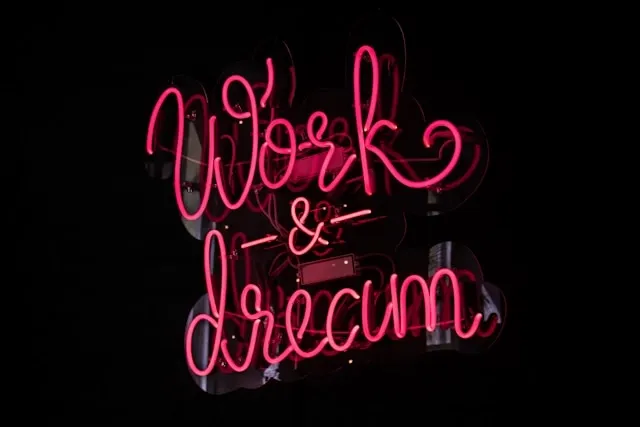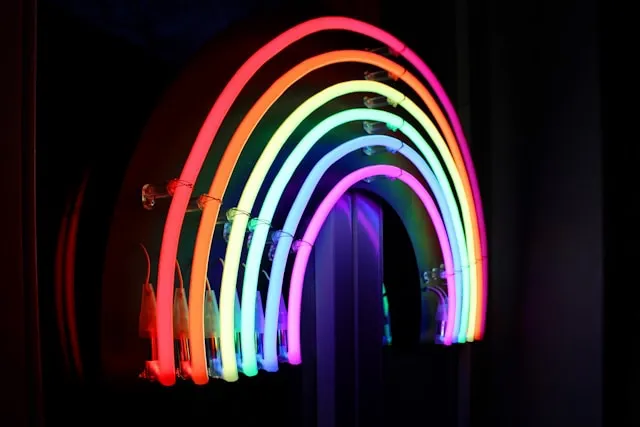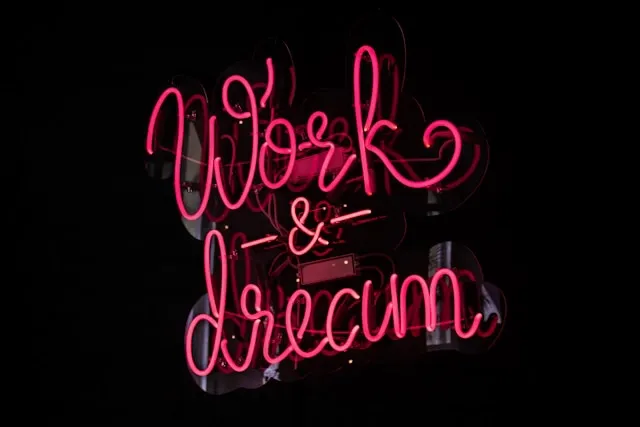Do Neon Signs Get Hot? All About Neon Light Heat: How Hot, Can You Touch, Hazards
In this exploration of neon signs, we answer the question ‘Do neon signs get hot?’ We cover the temperatures they can reach and evaluate their safety alongside potential hazards to give you a deeper understanding of neon light heat. Discover answers to common questions about warmth associated with these iconic light signs and gain insights into their potential impact in different settings.

Key Takeaways
- Neon signs do get hot, but only a little. The warmth is created by the process of illuminating the neon gas, but only a modest amount of heat is generated.
- Neon signs may be prone to overheating, but only if they are damaged or an external factor is at play.
- There are no major risks associated with neon signs - under normal conditions, they are not a fire hazard, and they donÔÇÖt explode or emit radiation and toxic gasses.
- If you are concerned about overheating, you could choose an LED neon sign and enjoy superior energy efficiency with no heat emission.
- We supply high-quality custom LED signs that are safe and energy-efficient, crafted meticulously to your specifications.
Do Neon Signs Get Hot?
Neon signs do get hot when in use. The heat they generate is a byproduct of the electrical discharge that is occurring inside the neon tubes. The surface temperature of the glass can be warm to the touch, but it will not typically heat to a level that poses a burning risk during normal operation. However, there are certain circumstances where faults in the product can cause the temperature to become dangerously high, so it is wise to practice caution when making physical contact with an active neon sign.
It’s worth noting that our custom LED signs remain cool to the touch even with prolonged use. This is because they operate on energy-efficient LED technology, and the silicone tubing that encases the LEDs is heat-resistant. For many, this makes them feel like a safer alternative, particularly in applications where minimizing heat is crucial.

Can Neon Signs Overheat?
Neon signs are long-lasting products and can be kept operational for extended periods. Traditional neon lights get hot, but not dangerously so. However, under exceptional circumstances, it is possible for neon signs to overheat. This is typically caused by issues like:
- Exposure to extreme temperatures
- Electrical malfunctions
- Excessive operation
- Insufficient ventilation
Overheating can lead to problems like distorted colors, reduce brightness, or even damage to the neon tubes in extreme cases. Adherence to manufacturer guidelines are important for mitigating this risk, and it is helpful to maintain your product diligently.
LED neon signs are extremely energy efficient and there is next-to no risk of overheating. If you are installing in a poorly-ventilated or warm location, it may be best to go with the LED option to minimize the risk of overheating that could damage the product or lead to other issues.
Are Neon Lights Hot to the Touch?
Whilst we wouldn’t say neon signs are hot to the touch, they certainly feel warm when they have been operational for a while. The sensation of touching a neon sign is comparable to touching a slightly warm surface, like a window that has been in moderate sunlight for a while.
You can compare the amount of heat generated to other, more familiar light sources to get an idea of how hot neon lights get:
- Incandescent bulbs and halogen lights: These light sources are not energy efficient and they can become hot enough to burn your hands. Neon lights get far less hot than these.
- LED lights: These are the coolest option, emitting virtually no heat even with prolonged operation due to their energy efficiency.
Neon lights can warm up, but they are generally safe to touch. It is always wise to exercise caution and avoid prolonged contact with them, but they are extremely unlikely to burn you.
Are Neon Signs Dangerous to Touch Due to Heat?
Under normal conditions, there is nothing dangerous about touching an active neon light as they don’t get hot enough to pose a burn risk. The heat they generate is minimal and unlikely to cause harm through physical contact. However, it is still wise to practice caution, particularly with prolonged exposure or if a sign is visibly malfunctioning and at risk of overheating.
It is important to understand that, while neon signs are not known to get dangerously hot, their electrical components can carry a unique set of risks. If you have any doubts about the safety of a neon sign, we recommend consulting a professional or the manufacturer for guidance on how to proceed. LED neon signs are a safer alternative as they produce minimal heat and pose no risk of shattered glass or gas emissions.
Are There Smart Safety Features For Overheating In 2025?
In 2025, some manufacturers now include smart temperature sensors in premium neon and LED neon signs. These integrated sensors are there to monitor the heat levels of our sign in real-time and, if the temperature exceeds safe thresholds, they might:
- Automatically deactivate the neon sign
- Alert you via a notification on your device
This feature is particularly useful in commercial settings where neon signs operate for long hours and overheating could pose a more significant risk.
For peace of mind, know that neon signs are designed to remain cool to the touch when operating - particularly LED neon signs. If you need reassurance, look for models that offer auto-shutdown if the sign exceeds safe operating temperatures. Innovations like this are especially helpful in environments where ventilation varies or there are frequent temperature fluctuations.
As neon signage continues to evolve, choosing signs with built-in heat management features is a smart step toward safer operation and a longer lifespan.
Do Neon Lights Give Off Heat If They’re Close to You?
The heat emitted by a neon light is very low, so you are unlikely to feel any significant warmth from being in close proximity to one. How do neon signs get hot? Well, it is due to the normal operation of the gas inside the tubes and accompanying electrical components. While there is generally very little risk, you should consider the practical implications of heat emission when choosing where to install your neon lights.
- Ensure there is adequate ventilation to dissipate any heat.
- Avoid placing your neon sign in an extremely confined space.
- Be mindful of installation near heat-sensitive materials.
Overall, though neon lights do produce some heat, it is typically negligible and people are unlikely to feel that warmth from close proximity. If you are really concerned about it, opt for LED neon signs instead.
How Hot Do Neon Signs Get?
The general operating temperature of neon signs generally stays around 100 degrees Fahrenheit, or 37 degrees celsius. The temperature can climb higher than this, but neon signs are not generally hot enough to be a problem. Generally speaking, they are cooler than a cup of coffee but warmer than a typical room temperature.
One thing to be mindful of is that accumulated dust or dirt on tubes can hinder heat dissipation, potentially leading to overheating. Learn how to clean neon signs and engage a regular cleaning regime to prevent this from happening. Despite operating at elevated temperatures, neon signs are considered safe for regular indoor use. The heat they emit is typically well within intended operating conditions.

Looking for neon signs that never get hot?
The technology in our custom LED signs means they produce very little heat so you never need to worry about your neon signs overheating when you work with us.
Neon Lights and Overheating: How Safe Are They?
Though your custom glass neon signs are generally safe, there are some risk factors that may increase the chances of them overheating:
- Accumulated dust or dirt on glass tubing may hinder heat dissipation.
- Faulty electric components may cause excessive heat.
- Impurities inside the tube can cause electrodes to have too much current passed through them.
Regular maintenance is the best route to proper heat management, so be diligent with cleaning and inspecting them regularly.
Alternatively, you could opt for custom LED signs and eliminate the issue of heat completely. Our products are created to the highest standards, bringing your personalized designs to life. With vibrant glows, myriad size options, and energy-efficient performance, you get all the benefits of traditional neon signs with none of the drawbacks. And all our products are sold at competitive prices. Simply design yours today and get a quote before you confirm your order.
Can Neon Signs Overheat and Pose a Fire Hazard?
Generally speaking, neon signs don’t pose a significant fire hazard if they come from a reputable supplier and are properly installed and maintained. The neon tubes operate at a cool temperature and there is insulation to prevent contact with flammable materials.
That being said, you should be careful with them, as you should with all electrical appliances. The risks increase with:
- Poor installation
- Damaged components
- Inadequate maintenance
When neon signs are developed, they must pass tests that ensure they adhere to safety standards and regulations. Routine inspections are carried out to ensure compliance with these standards. With traditional glass neon signs, it is advisable to have the installation carried out by a professional. You should also follow manufacturer guidance on maintenance, as well as general common sense, to minimize any potential fire risk associated with these electrical items.
Do Neon Signs Emit Radiation or Toxic Gasses?
There is a belief that neon signs may emit harmful radiation or toxic gasses when they operate. The illumination of neon signs is achieved via the interaction of electricity with inert gas like neon or argon inside the sealed glass tubes. There is no radiation, and there are no toxic gasses involved in this process. As such, the beliefs about these threats are a complete myth.
One danger that you should be mindful of, however, is that broken tubing could expose you to shards of glass, which is a hazard as it may cut or scratch your skin. This is why it is crucial to adhere to proper safety guidelines for the handling and maintenance of your neon signs. One of the benefits of our LED-based custom neon flex signs is that no glass is involved. The LEDs are encased in silicone tubing that is flexible and robust. In any case, no neon signs pose any risk from radiation or toxic emissions.
Can Neon Signs Explode Due to Heat?
It is virtually impossible for a neon sign to explode due to heat, as there is nothing explosive in their makeup. The glass tubing is designed to withstand the types of heat generated during the illumination process, and the gasses inside the tubes are not flammable.
There is an outside chance of external factors leading to a fire, though the likelihood is extremely remote. Possible risk factors include:
- Physical damage
- Exposure to extreme temperatures
- Manufacturing defects
Even with any of these issues, an explosion is almost impossible. Buy from a reputable supplier and always handle your neon signs with care, engaging in regular maintenance and swiftly addressing any signs of damage. Though neon lights can get hot, there is no historical evidence of neon gas exploding, so this is not a risk you need to be concerned about.
Are There Neon Signs That Don't Feel Very Hot?
Neon signs should never feel very hot. Though they do warm up a little during operation, under normal conditions this heat is minimal and doesn’t pose any significant risk to people. However, if you are concerned about the potential risks relating to external factors, and would prefer a neon sign that doesn’t get hot at all, there is an option available for you.
There are many ways we can compare LED neon vs glass neon signs. The first thing to note is that LED neon lights do not get hot at all, as the way they operate is very efficient. Here are some other points of comparison:
- Aesthetic: Glass neon signs have the iconic, retro aesthetic that LED signs closely mimic, but don’t quite match.
- Noise: Traditional neon signs emit a low hum when operating, but LED neon is silent.
- Energy efficiency: LED signs are considerably more energy efficient than neon ones.
- Initial cost: Generally speaking, LED neon lights are cheaper to buy because the manufacturing process is a lot simpler.
If you want a modern solution that doesn’t get hot and uses very little electricity, LED neon signs are the answer.

The Enigma of Neon Signs: Do They Get Hot or Make Noise?
Typically, neon signs do not produce a great deal of noise as part of their normal operation. In order to illuminate, these iconic signs must engage in the excitation of gasses within the glass tubes by delivering electrical currents, which creates the luminous displays we know so well.
The delivery of this electricity creates a low humming sound. It should not buzz - if you hear a buzzing, this may indicate a mechanical issue like a faulty transformer. While these neon signs don’t use lots of electricity, they do use considerably more than their LED counterparts. And the way they use electricity generates a modest amount of heat and a low hum.
If you own a neon sign, pay attention to the sound it makes when operating. It should be very quiet and defined as a hum rather than a buzz. If you are concerned about the sound you hear, it may be wise to get a technician to look at it and check that there isn’t a problem with the electrics.
Customize your own low-heat neon sign
Choose us as your custom neon sign maker to create a personalized LED neon sign that never gets hot when in use, offering peace of mind for the long term.
Get startedFrequently Asked Questions About 'Do Neon Signs Get Hot'
Do Neon Signs Get Hot?
Neon signs do get hot, but only by a very small amount. The way they operate generates a modest amount of warmth, but it shouldn’t be enough to pose any risk of burning or fire unless external factors are involved.
How Hot Do Neon Signs Get?
Neon signs typically warm to around 100 degrees Fahrenheit (37 degrees Celsius), making them slightly warm to the touch. They can get a little hotter than this, but always within a safe range. If they overheat, it indicates there is an external factor at play.
